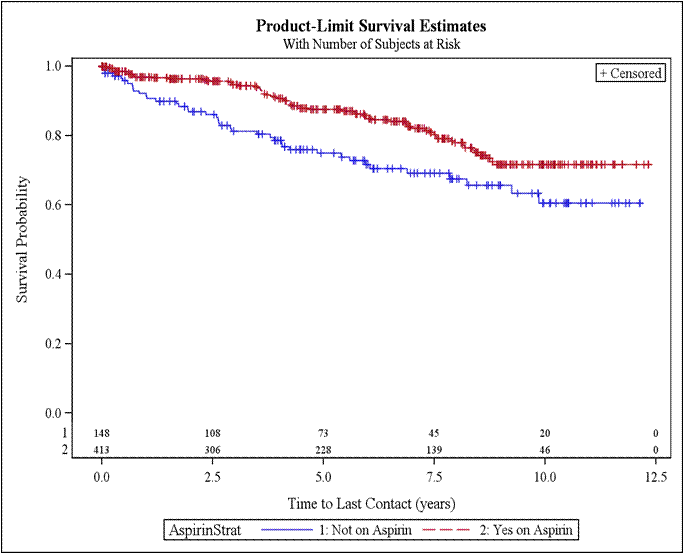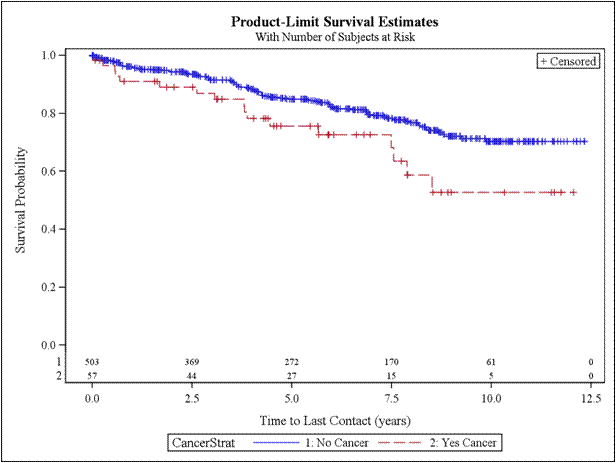Back to Annual Meeting Program
Mortality in Patients with Premature Lower Extremity Atherosclerosis
Hamza Rana, Jeanette Stafford Andrews, Billy Chacko, Kimberley J Hansen, Pavel J Levy
Wake Forest Baptist Health, Winston-Salem, NC
INTRODUCTION: Lower extremity peripheral artery disease which occurs mostly in elderly is associated with high mortality. No data are available regarding long term mortality in patients with premature lower extremity atherosclerosis (PLEA). Our objective was to determine the all cause mortality and its predictors in younger PLEA patients.
METHODS: We studied patients with severe PLEA <55 years of age at diagnosis treated at single academic vascular center between 1998 and 2010. Data were collected prospectively at the initial evaluation for vascular care. National Death Index (NDI) and hospital records were used to determine all cause mortality. Demographic and clinical characteristics were summarized using count (%) or mean ± SD. Survival times were estimated using Kaplan-Meier estimates, and associations with covariates were tested using simple and multivariable Cox proportional hazards models.
RESULTS: Total of 564 patients were analyzed (46% female; 20% Black, with mean age 49.38±6.44 yrs). Ninty five percent of patients have ≥ 2 cardiovascular risk factors; 31% had coronary artery disease (CAD), and 10% had history of cancer. During a median follow-up of 5.6 years (IQR, 2.3-8.4 yrs), 108 (19%) deaths were recorded. 2- year estimated mortality was 6% and 5- year estimated mortality was 16%. In univariate regression analysis, patient age (p=0.04), prior amputation (p<.01), history of cancer (p=0.02) and established CAD (p=0.03) were associated with increased risk of mortality. Aspirin use and lipid lowering therapy (LLT) at the time of first evaluation were associated with improved survival (p<0.01 and p=0.01 respectively). Figure shows Kaplan-Meier estimates stratified according to history of aspirin use and cancer status.
Survival Stratified by Aspirin Use

Survival Stratified by Cancer Status

A multivariable Cox proportional hazard model identified age (HR for 5-year increase 1.2; 95% CI 1.0-1.4; p=0.04), prior amputation (HR 2.0; 95% CI 1.2-3.3; p<.01), history of cancer (HR 2.4; 95%CI 1.4-4.1; p<.01), CAD (HR1.8; 95%CI 1.2-2.7; p<.01) as independent predictors of mortality in patients with PLEA. Importantly, history of aspirin use had significant protective effect (HR 0.4; 95%CI 0.3-0.7; p<.01). The impact of LLT was no longer significant in multivariable model.
CONCLUSIONS: Patients with PLEA demonstrate a high follow-up mortality. No traditional cardiovascular risk factors predicted mortality. Aspirin therapy at the time of first evaluation was a significant and independent predictor of improved survival in patients with PLEA.
Back to Annual Meeting Program
